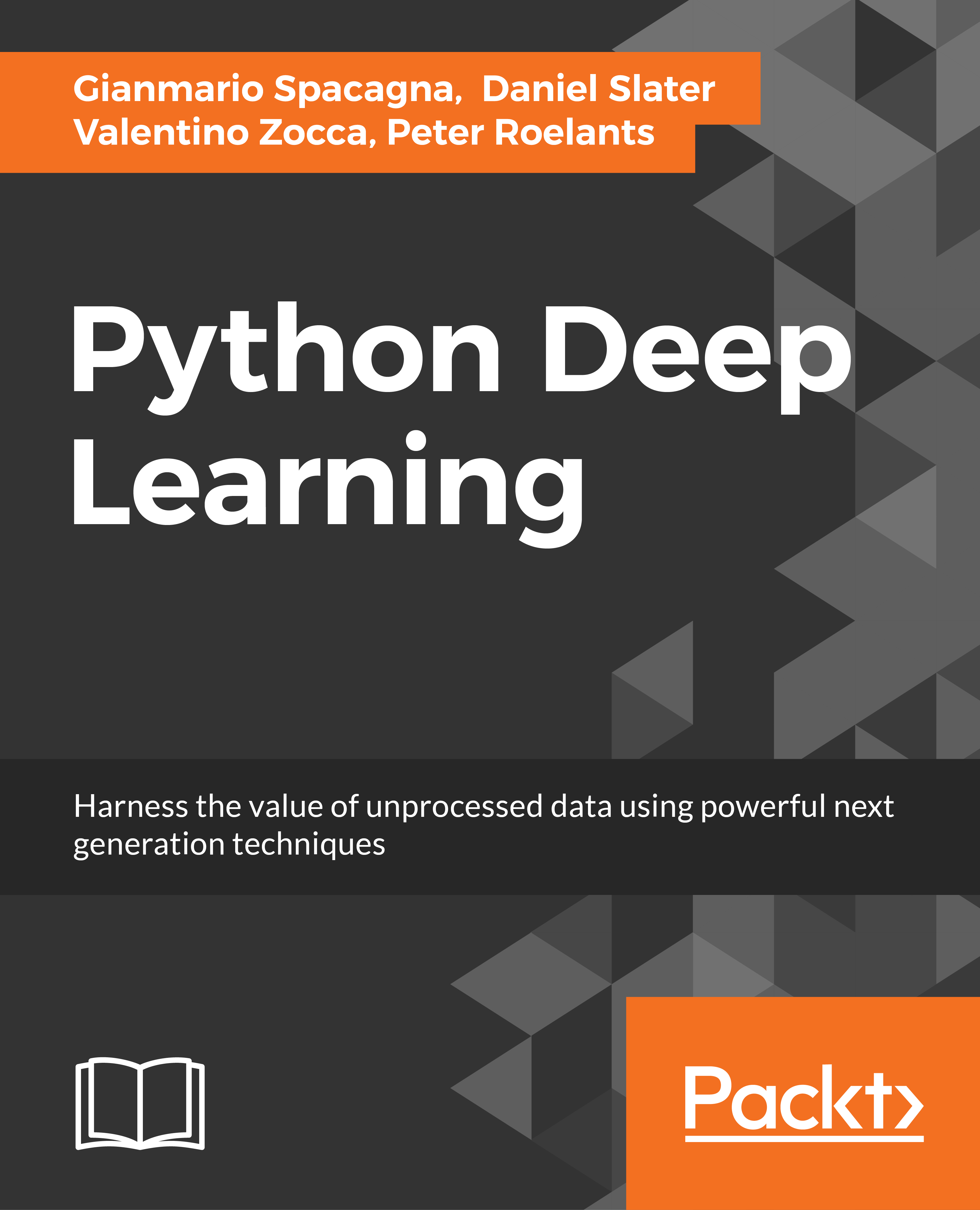-
Book Overview & Buying

-
Table Of Contents

Python Deep Learning
By :

Python Deep Learning
By:
Overview of this book
 Free Chapter
Free Chapter
 Sign In
Start Free Trial
Sign In
Start Free Trial


 Free Chapter
Free Chapter
Training a network means having already designed its topology. For that purpose we recommend the corresponding Auto-Encoder section in Chapter 4, Unsupervised Feature Learning for design guidelines according to the type of input data and expected use cases.
Once we have defined the topology of the neural network, we are just at the starting point. The model now needs to be fitted during the training phase. We will see a few techniques for scaling and accelerating the learning of our training algorithm that are very suitable for production environments with large datasets.
The final convergence of neural networks can be strongly influenced by the initial weights. Depending on which activation function we have selected, we would like to have a gradient with a steep slope in the first iterations so that the gradient descent algorithm can quickly jump into the optimum area.
For a hidden unit j in the first layer (directly connected to the input layer), the sum of...
